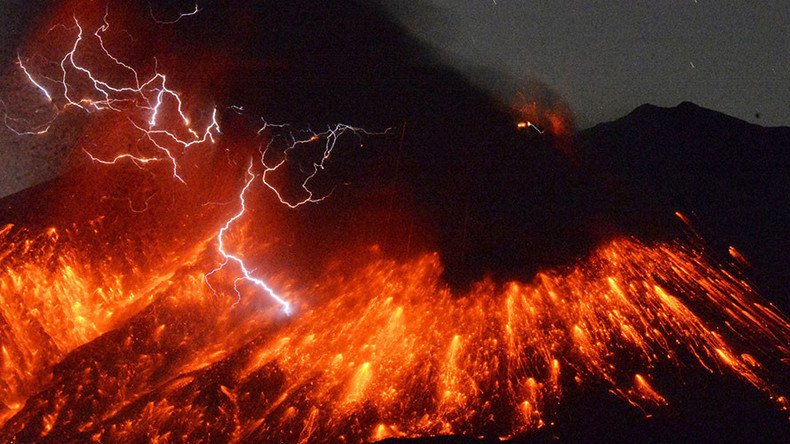Huge growing magma bubble blamed for New Zealand quakes

Scientists have discovered what they believe may be the culprit behind New Zealand’s recent series of earthquakes – a rising buildup of magma just 10km below the Earth’s surface which could signal the formation of a new volcano.
Geophysicists located the hot chamber beneath the Bay of Plenty coast after they noticed the surface ballooning and changing shape significantly between 2004 and 2011.
Ian Hamling led the team from the New Zealand research institute, GNS Science, who used a combination of monitoring equipment to track the ground as it lifted and fell in the Taupo Volcanic Zone, a 30 km space that stretches across the North Island’s coast.
READ MORE: Apocalypse Not Now: Yellowstone supervolcano eruption predictable up to 10 yrs in advance
The growing mass of magma is now being pegged as a possible explanation for the country’s thousands of earthquakes that have shaken coastal towns like Rotorua and Matata for years.
The rising bubble could also be attributed to tectonic plates, the Pacific plate, which NZ sits on, sliding against Australia’s plate, or there is a possibility that scientists are seeing the beginning stages of a volcano formation.

“It was quite a big surprise,” said Dr. Hamling, who warned that while an eruption in our lifetime is not likely as it will take hundreds, if not thousands, of years for a full volcano to form, the chamber does hold enough lava to fill 80,000 Olympic-size swimming pools.
"While there is absolutely no evidence pointing to volcanic unrest in coastal Bay of Plenty, this finding underlines the fact that we live in a geologically active country where it pays to be prepared," the researchers wrote in Science Advances.
READ MORE: ‘Drumbeat’ volcano earthquakes triggered by external noise – study












